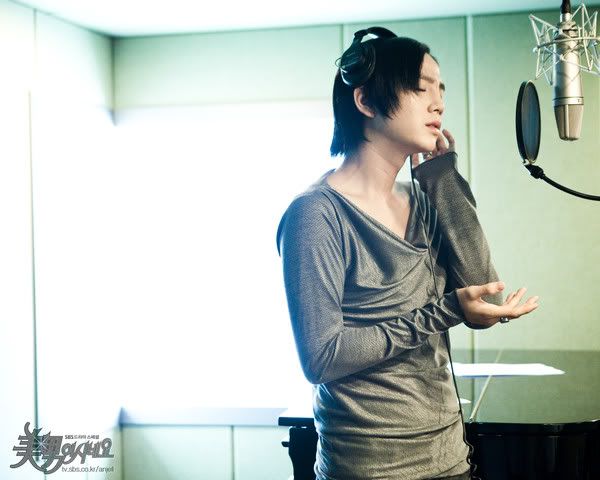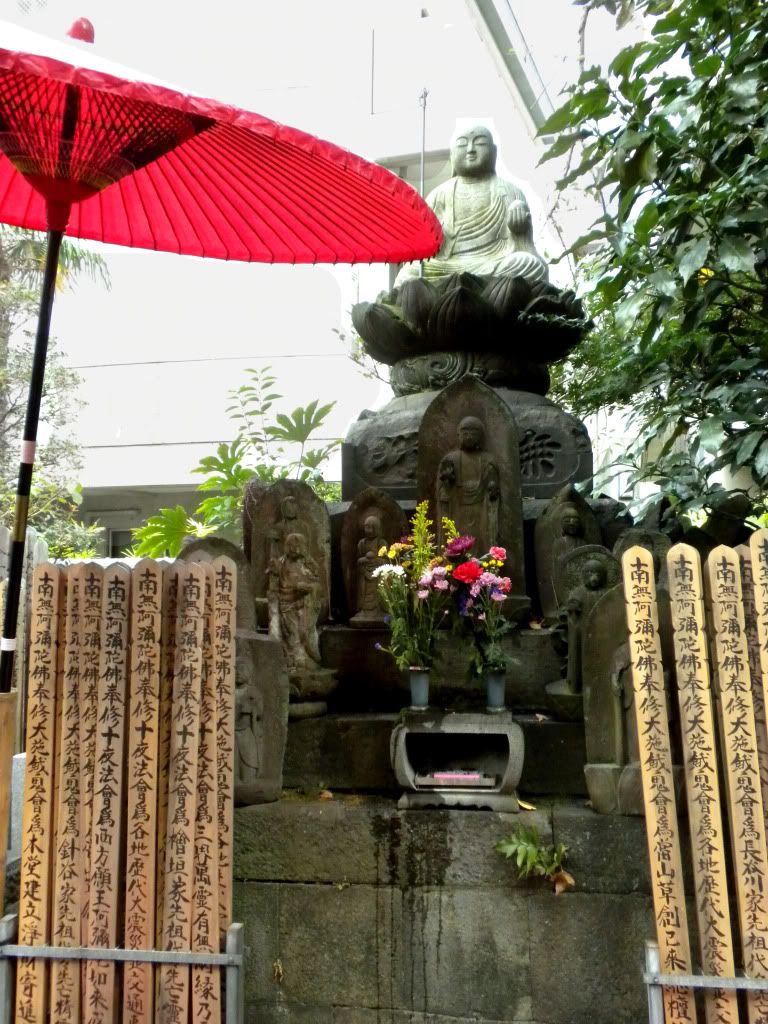 Omedetou Gozaimasu! Happy New Year everyone! Well, I'm finally back online. I safely got my family back to the old U S of A, despite the crazy new airport precautions, and have a lot to report about Christmas and New Years in Japan. Christmas I think I've more or less talked about already, so I won't waste too much time on that, but New Years was a whole new experience. New Years in Japan is a lot like Christmas in the US in that it's the big holiday where everyone makes the long trip back home to spend it with their family. It's riddled with lots of traditions and you get off lots of work for it. Festivities start at 11:45 on the 31st, where the night owls trudge out in the cold to their local shrine and wait in a line (of 2000 people here at our shrine), for the Taiko Drums to signal the start of the New Year, and then everyone proceeds up the steps of the shrine to pray to the god of the New Year, asking for luck and fortune. After this, they proceed to a tent erected especially for the occasion, where the shrine staff (myself included) have stockpiles of charms and fortunes to sell. You see, all the religious memorabilia that people have bought in the previous year are thrown away in a special basket, and new objects are bought at the new year (often with that year's symbol on them [i.e. the Year of the Tiger]). Some of the goods we sold were typical Omamori (cloth charms for specific needs like luck in studies, safety on the road, fortune, love, etc.), small tiger statues, banners with tigers on them, arrows with wooden prayer placards fastened on, wooden praying boards, Daruma (specific dolls, where you draw in one eye and make a wish, and then draw in the other eye when it comes true), and then fortunes, where you shake out a stick with a number and get the corresponding fortune paper. I manned the fortunes until 2 am, before turning in. Other things about New Years: offerings of double-stacked, round mochi (chewy, beaten rice) are offered to the god of the new year on altars in the shrine and in houeholds, and are then eaten on the 7th, ending the New Years festivities. Special chopsticks are used from the 1st to the 3rd, when they are discarded. Special bentos (lunch boxes), filled with specific foods (all of which have a meaning) are eaten. Every morning for 7 days (I think), people in the family wake up and, using a special pot and stacked cups, drink sake for the new year. White folded paper is tied on everything in the shrine to indicate that god resides within. On the days leading up to the 1st, families perform 'spring cleaning' to encourage the god to enter their home. I'm sure there's more, but I won't ramble any longer about that.
Omedetou Gozaimasu! Happy New Year everyone! Well, I'm finally back online. I safely got my family back to the old U S of A, despite the crazy new airport precautions, and have a lot to report about Christmas and New Years in Japan. Christmas I think I've more or less talked about already, so I won't waste too much time on that, but New Years was a whole new experience. New Years in Japan is a lot like Christmas in the US in that it's the big holiday where everyone makes the long trip back home to spend it with their family. It's riddled with lots of traditions and you get off lots of work for it. Festivities start at 11:45 on the 31st, where the night owls trudge out in the cold to their local shrine and wait in a line (of 2000 people here at our shrine), for the Taiko Drums to signal the start of the New Year, and then everyone proceeds up the steps of the shrine to pray to the god of the New Year, asking for luck and fortune. After this, they proceed to a tent erected especially for the occasion, where the shrine staff (myself included) have stockpiles of charms and fortunes to sell. You see, all the religious memorabilia that people have bought in the previous year are thrown away in a special basket, and new objects are bought at the new year (often with that year's symbol on them [i.e. the Year of the Tiger]). Some of the goods we sold were typical Omamori (cloth charms for specific needs like luck in studies, safety on the road, fortune, love, etc.), small tiger statues, banners with tigers on them, arrows with wooden prayer placards fastened on, wooden praying boards, Daruma (specific dolls, where you draw in one eye and make a wish, and then draw in the other eye when it comes true), and then fortunes, where you shake out a stick with a number and get the corresponding fortune paper. I manned the fortunes until 2 am, before turning in. Other things about New Years: offerings of double-stacked, round mochi (chewy, beaten rice) are offered to the god of the new year on altars in the shrine and in houeholds, and are then eaten on the 7th, ending the New Years festivities. Special chopsticks are used from the 1st to the 3rd, when they are discarded. Special bentos (lunch boxes), filled with specific foods (all of which have a meaning) are eaten. Every morning for 7 days (I think), people in the family wake up and, using a special pot and stacked cups, drink sake for the new year. White folded paper is tied on everything in the shrine to indicate that god resides within. On the days leading up to the 1st, families perform 'spring cleaning' to encourage the god to enter their home. I'm sure there's more, but I won't ramble any longer about that.In other news, January 2nd is the big shopping day. It is Japan's response to America's "Black Friday," only on a grander scale, if you can imagine that. Today's word is: fukubukuro, which means a grab back. In conjunction with sales, most big name stores, even brands like Gucci, etc., offer grab bags, which are suprise bags, usually costing between $50 and a couple hundred dollars, though the mysterious contents always add up to be much more than what you pay for. Some stores' grab bags, or fukubukuro, are so sought after that people line up two days before to be sure that they will get one. I, myself, participated in this crazed shopping frenzy in a much smaller way, by going to Shibuya with my mother and buying a $50 grab bag from my very favorite store, FrancFranc, which is like a trendier, better version of Pier 1. Inside a nice sized, zip up picnic basket, I discovered two cup and plate sets, gray and pink, two face towels, gray and pink, bath fizzes, gray and pink, something else I've forgotten, and a Panini maker. Wow! I was so excited. I love FrancFranc. Anywho...5000 people packed into the 109 building to secure their grab bags that morning, and everyone else came out later I think, because boy was Shibuya packed.
Well, I've got one more month left of classes before my two month long spring break, and it's officially crunch time. I'm desperately trying to find the motivation to write my big research paper, but I keep putting it off. Gosh I hate school, and to be honest, I think I'm officially ready to come home. Oh well, what's another 200 days, right?
In more important news, I have just finished the first Korean Drama I've watched in probably a year (oh how I've grown to hate the formulaic, sappy Kdramas). I must have taken temporary leave of my senses to be goaded into starting one, but the promise of only 16 episodes (as opposed to 26), was tempting, the storyline sounded diverting, and it was sealed by founding out the guy from the Itaewon Homicide movie was the lead (a man who, I have since fallen in love with). And the reason I bring this drama up is to encourage anyone and everyone to watch it. It is, by far, the best Kdrama I think I've ever seen. It does have it's stereotypical moments (it's a Kdrama, what do you expect), and melds Goong with Coffee Prince, but does it better. And what-ho, it actually had a satisfying ending, something I'd all but given up on for Korean shows.
 So, I encourage everyone out there to go to dramacrazy.net and watch it right away. You won't be disappointed. It's called "You're Beautiful" and it's about a would-be nun/young girl who, because of reasons I won't bother with, must pretend to be her twin brother in a boy band, thus dressing up like a guy, but of course, our hero (a guy with a troubled, painful past) soon uncovers the truth, and together they go through hijinks with the other main characters to try to keep her real identity a secret until her brother can take his rightful place in the band. And of course, it's a love story too. I mean, take a look at this guy. If he's not enough to make you want to watch the show, I don't know what is.
So, I encourage everyone out there to go to dramacrazy.net and watch it right away. You won't be disappointed. It's called "You're Beautiful" and it's about a would-be nun/young girl who, because of reasons I won't bother with, must pretend to be her twin brother in a boy band, thus dressing up like a guy, but of course, our hero (a guy with a troubled, painful past) soon uncovers the truth, and together they go through hijinks with the other main characters to try to keep her real identity a secret until her brother can take his rightful place in the band. And of course, it's a love story too. I mean, take a look at this guy. If he's not enough to make you want to watch the show, I don't know what is.PS, I uploaded more pics here: http://s57.photobucket.com/albums/g214/celebgil05/Family%20Visit/
And here's a preview for the drama. It's a little long, but (ignoring the first 40 goofy seconds) it basically sets you up for what the show is like. If you end up watching, you have to keep me updated with what you think!


